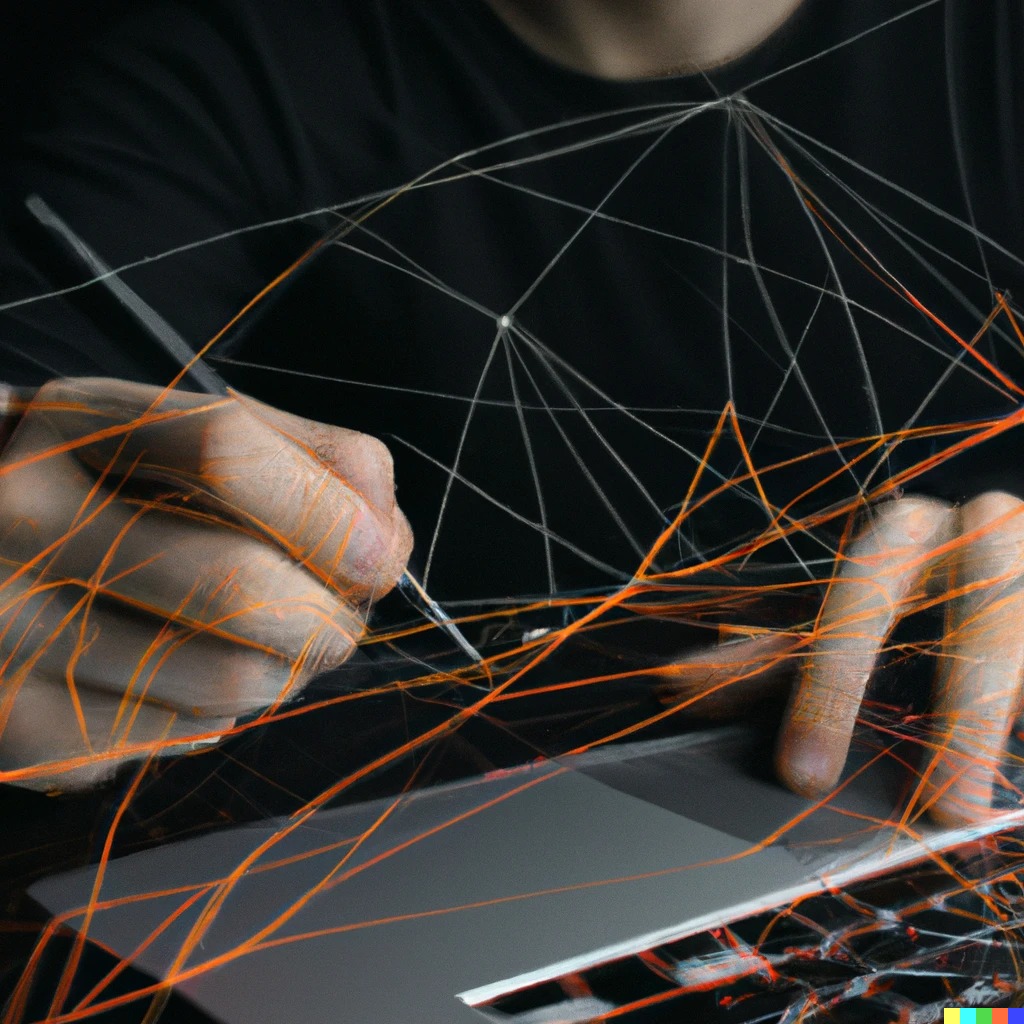Learning to Unlearn: The Importance of Machine Unlearning in the Age of Big Data
"The Time we learn what to unlearn is the time we grow up." - Bishmeet Singh
Most of the time, we think that big data is better data. This can be correct in some cases, but we all know the importance of quality data and how hard to obtain it. Even though we cleaned our data, the dataset could still contain inaccurate entries. As a result, they reduce the performance of our machine-learning models. This is an unwanted situation, but there could be worse. Imagine that you deploy your model, and then you learn that there is private information in the dataset, and they need to be removed. If you have a relatively small dataset, this will not create a big problem; you need to delete the data and take a sip from your coffee, but what if your dataset is really big? What happens, then? In the best-case scenario, you can train your model, even though this could be time-consuming and costly. In the worst-case scenario, you can again train the model and spend time and money. In the end, you could obtain a model with subpar performance. However, how can we avoid this situation? The answer could be “Machine Unlearning.”
Machine unlearning is a crucial aspect of machine learning that allows models to adapt to changing conditions over time. As new data become available or as the underlying problem changes, it may be necessary to remove or modify previously learned information in order to ensure that the model is still producing accurate and reliable results. In addition, machine unlearning has important implications for data privacy because it allows for removing or modifying previously learned information, which can help protect sensitive information and preserve privacy. By using machine unlearning techniques, it is possible to remove or modify sensitive information from machine-learning models and protect the privacy of individuals. For example, if a model has inadvertently learned information about the race or gender of individuals, machine unlearning techniques can remove this information from the model while still preserving its overall performance. Similarly, machine unlearning techniques can remove this information and protect the privacy of individuals if a model has been trained on data that includes personally identifiable information, such as names or social security numbers.

Several techniques are commonly used in machine unlearning, such as reverse gradient, randomized response, or regularization. Also, graph theory can represent the relationships between different features or data points in a dataset in machine unlearning. By analyzing these relationships, we can identify redundancies or irrelevant features and remove them from the dataset, ultimately improving the machine learning model's performance. Linear algebra can also be used in machine unlearning by enabling the manipulation of large matrices of data. For example, if we have a dataset of features and labels, we can represent this data as a matrix, where each row corresponds to a particular sample, and each column corresponds to a particular feature or label. By manipulating this matrix, we can perform operations such as removing or modifying specific data points or features and updating the parameters of models.
In conclusion, machine unlearning aims to ensure that the model can produce accurate and reliable results, even as conditions change over time, protecting data privacy and addressing bias and discrimination in machine learning. This can be a complex and challenging process, but it is essential to building robust and effective machine learning systems. Machine unlearning is an emerging concept; we will see together how it will affect the future of machine learning.

Cheap Mdphp Cocaine Ketamine Fentanyl Meth Ephedrine 2CB powder
Buy Research Chemicals Ephedrine hcl JWH-018 2fdck Apvp 3cmc Alprazolam Bromazepam Clonazolam Powder Protonitazene 2CB Mdphp Freebase Buy 5cladba 5cl online directly from @buy2cbonline.com/shop/
Threema: 3F3YDZMD
Telegram: @DHlabo
WhatsApp: +44 7507412275
Buy 5cladba 5cl online | Order 5cladba 5cl Online in Australia - https://buy2cbonline.com/product/buy-5cladba-safely-online/
Buy Mdphp Freebase online | Order Mdphp Freebase online #mdphpfreebase #buymdphpfreebase #mdphpfreebaseforsale #kaufenmdphpfreebase #mdpvforsale #monkeydust #mdphpmonkeydust
https://buy2cbonline.com/product/order-monkey-dust-online-mdphp/
Buy Ketamine online | Order Ketamine online Australia #ketaminepricepergram #buyketamine
#orderketamineonline #ketamineaustralia #wheretobuyketamine
ketamine Price per gram https://buy2cbonline.com/product/buy-ketamine-online/
Buy 5f-mdmb-2201 online - https://buy2cbonline.com/product/5f-mdmb-2201-for-sale-online/
Buy 2fdck online | Order 2fdck online AUS | 2fdck price per gram
#buy2fdckonline #2fdckforsale #order2fdckusa #2fdckaustralia #2fdckpricepergram
https://buy2cbonline.com/product/2-fdck-for-sale/
Buy JWH-018 online | Order JWH-018 online | JWH-018 Price per gram #jwh018forsale https://buy2cbonline.com/product/buy-jwh-018-online/
Buy Cocaine online AUS | Order Cocaine online Australia | Cocaine price per gram Australia
#buyCokeonline #ordercocaine #cocaineforsale #cocaineaustralia #buycocaineaustralia
https://buy2cbonline.com/product/buy-fish-scale-cocaine-online-fast/
Buy Ephedrine hcl online | Order Ephedrine hcl online AUS #ephedrinehclpowder #buyephedrinehcl
Ephedrine hcl price per gram AUS #orderephedrinehclnow #ephedrinepowderforsale
https://buy2cbonline.com/product/buy-ephedrine-online-hcl-powder/
Buy Crystal Meth online | Order Crystal Meth online | Crystal Meth price per gram AUS | Buy Cheap Crystal Meth online AUS #buymethonline #crystalmethaustralia #methusa #buymethcanada #ordermethonline #ordercrystalmethnow #overnightMethdelivery
https://buy2cbonline.com/product/buy-crystal-meth-online/
Buy Clonazolam online - https://buy2cbonline.com/product/buy-clonazolam-powder-online/
Buy 2C-I powder online - https://buy2cbonline.com/product/2c-i-powder-for-sale-online-safely/
Buy Alpha-pvp online | Order Apvp online | Apvp Price per gram AUS | Apvp price per kg in Australia #Apvpforsale #buyApvponline #Apvpusa #Apvpincanada #BuyApvpincanada #buyapvpinusa
https://buy2cbonline.com/product/buy-a-pvp-online-usa/
Buy Bromazolam powder online #BromazolamPricepergram #OrderbromazolamOnline
https://buy2cbonline.com/product/buy-bromazolam-powder-online/
Buy 2CB powder online | Order 2CB powder online | 2CB price per gram Australia
#2cbpowder #buy2cbpowderonline #2cbpowderforsale #order2cbpowder #cheap2cbpowder
https://buy2cbonline.com/product/buy-2cb-powder-online/
Buy Alprazolam powder online Order Alprazolam Powder Online | Alprazolam Powder Price per gram in Australia
Buy Alprazolam Powder online #AlprazolamPowder #buyalprazolamPowder #ALprazolamPowderAustralia #AlprazolamPowderforsaleAustralia #AlprazolamPowderPriceperkg
https://buy2cbonline.com/product/alprazolam-powder/
#Buyprotonitazeneonline #OrderProtonitazeneOnline
https://buy2cbonline.com/product/hydrochloride-protonitazene-for-sale/
#Buyfentanylonline #orderfentanylonline #fentanyforsalelonline #fentanylaustralia
https://buy2cbonline.com/product/buy-fentanyl-powder-online/
Buy 3CMC crystal online Order 3CMC online
| 3CMC price per gram | Buy Cheap 3CMC online | https://buy2cbonline.com/product/buy-3cmc-crystal-3-cmc-online/
Buy Alprazolam Powder Online|Order Alprazolam Powder Online | Alprazolam Powder price per kg @buy2cbonline.com
Threema: 3F3YDZMD
Telegram: @DHlabo
WhatsApp: +44 7507412275